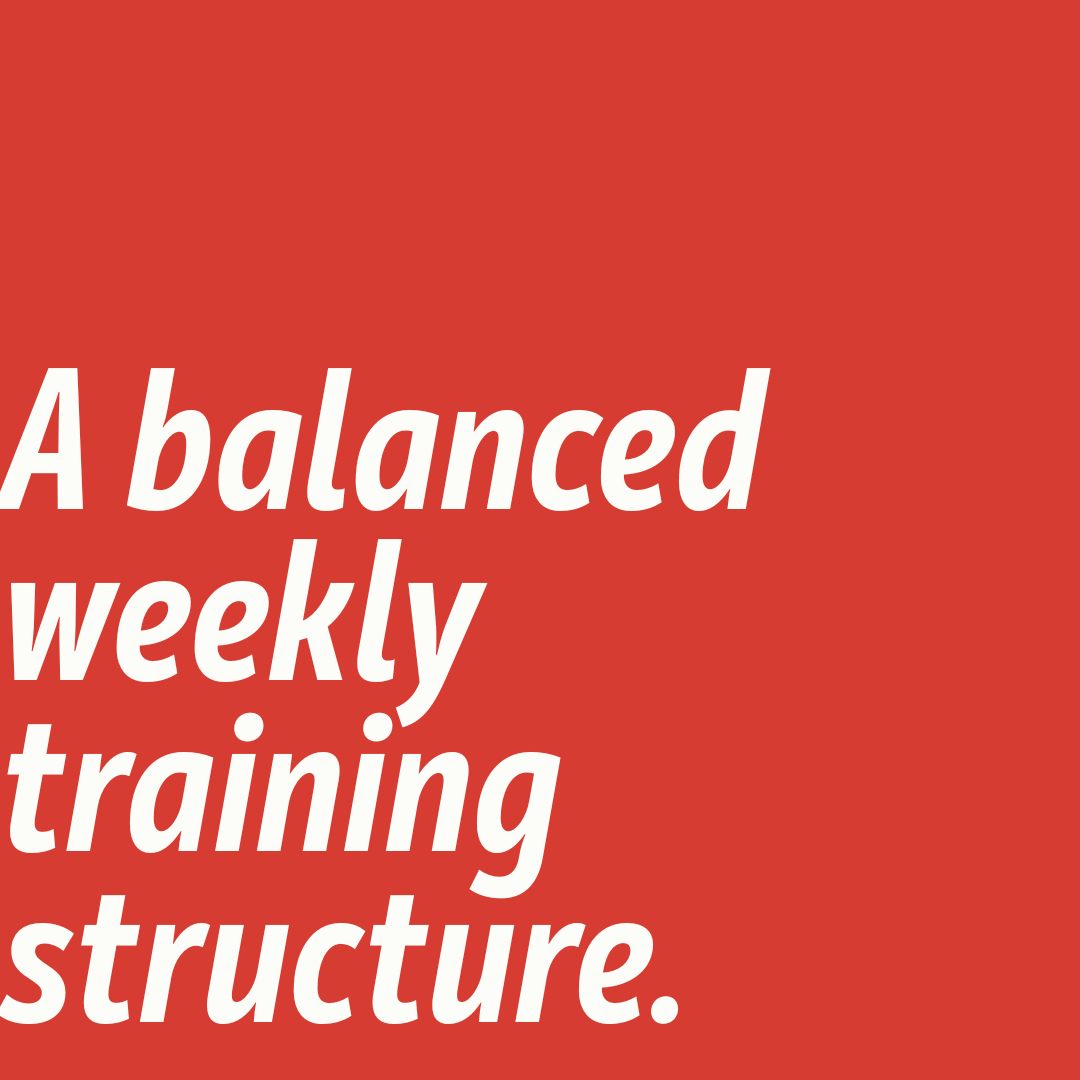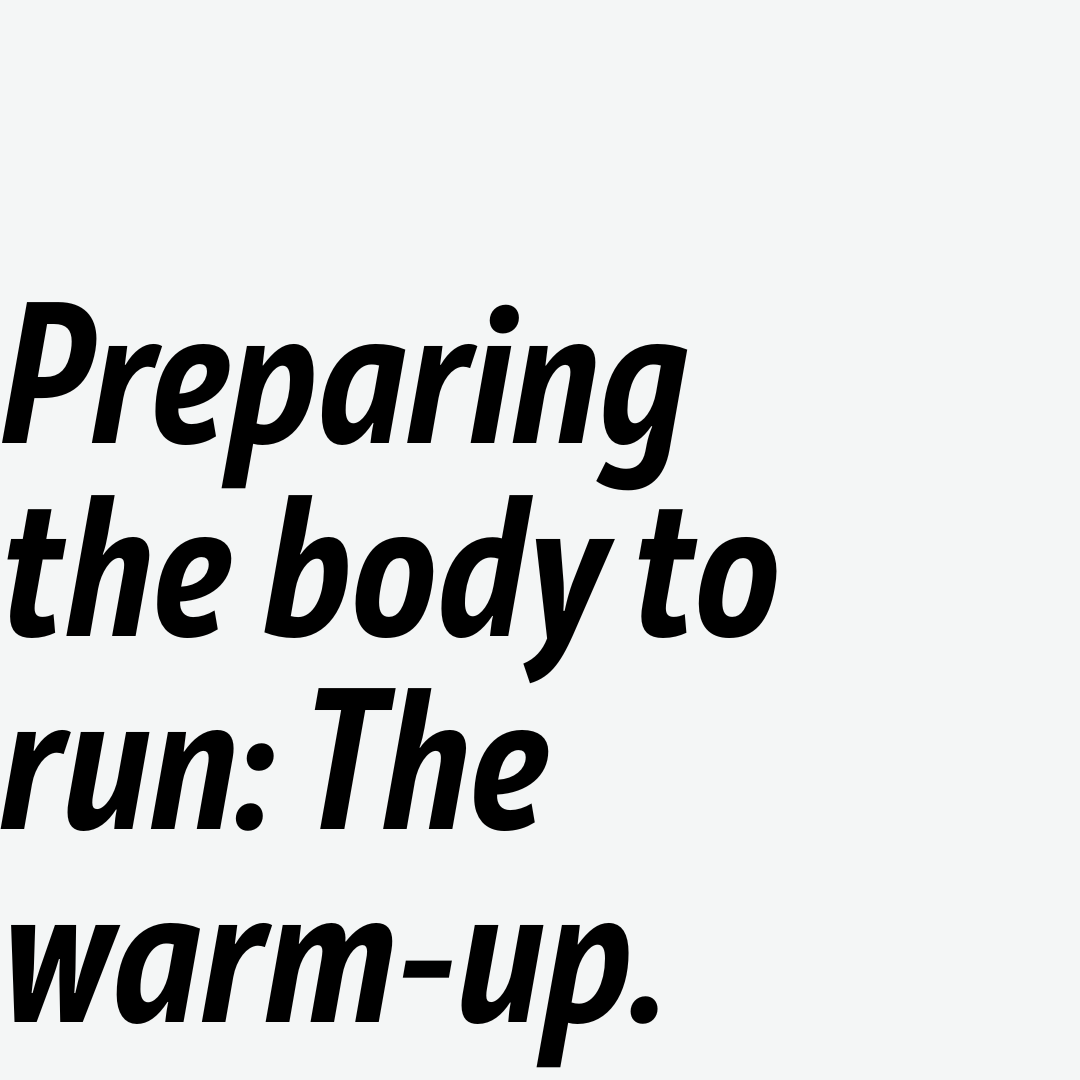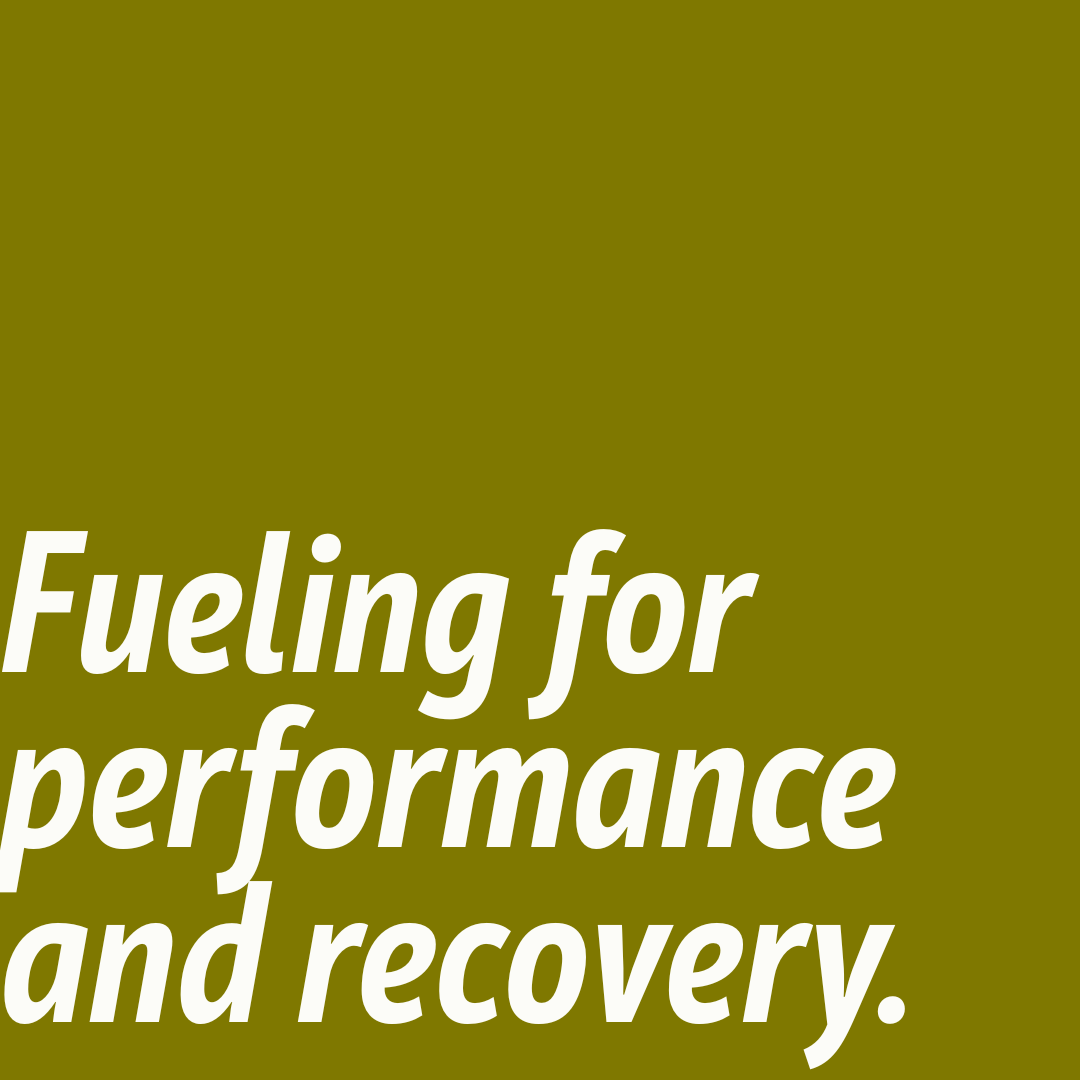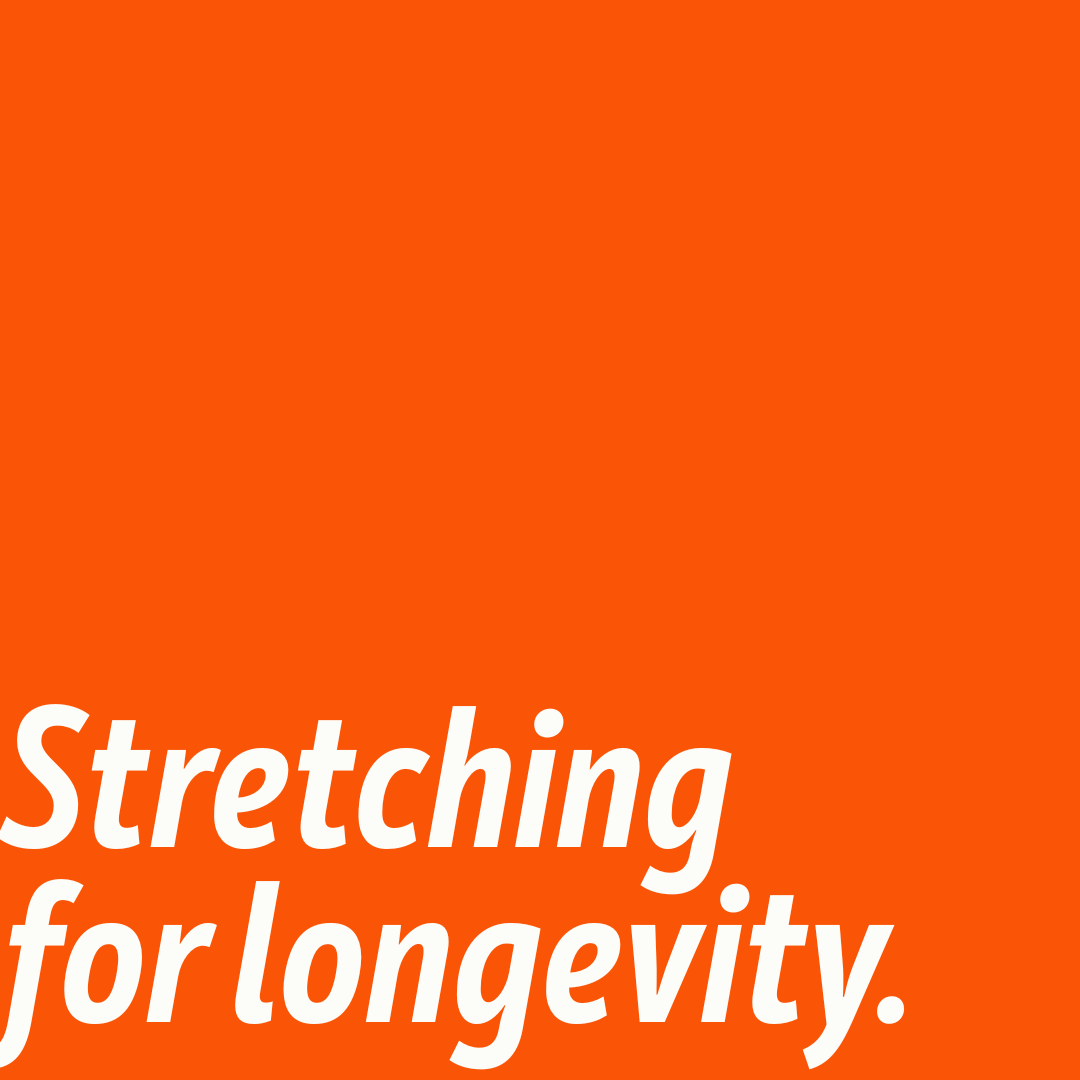A great running routine is more than just running. Whether you’re training for your first event or looking to improve your performance, your progress will be shaped by what you do before, during, and after each run. That includes how you structure your week, how you prepare your body, what you eat, how you recover, and even the gear you use.
This article brings together the foundational elements of a well-rounded running program, helping you feel better, train smarter, and reduce your risk of injury.

Each week, you'll receive a tailored training plan delivered by email. The structure is designed to provide a healthy mix of intensity, recovery, and progression. It includes several run sessions, a strength or conditioning workout, and one or more active recovery or rest days such as walking, yoga, or swimming.
While the plan gives a clear outline, you're encouraged to shift sessions around to suit your schedule. The most important goal is consistency, aiming for at least three active days per week helps you build momentum without burning out. If you’re not yet following a specific goal, you’re welcome to start at your own pace. You’ll still benefit from the structure and variety in the program.
As part of the weekly routine, you also have the option to join our in-person FAT and Road Runners Conditioning sessions. These take place every 3rd Tuesday of the month from July 22 with our friend at
. Expect a combine running with strength training in a group format. It’s a great way to stay motivated, get professional guidance, and train alongside others.

A good training week starts with a good session, and a good session starts with a proper warm-up. This phase is often overlooked but is essential for preparing both body and mind.
An effective warm-up has three key components: raising your body temperature, activating key muscles, and mobilising your joints. Start with gentle joint mobility movements like ankle circles, knee hugs, and hip rotations to improve your range of motion and prepare your body for the repetitive load of running. Done correctly, a warm-up sets you up to run more efficiently and reduces the risk of injury.
Then move into 5 to 10 minutes of easy jogging or brisk walking to increase your heart rate and blood flow.
Finally, dynamic movements such as lunges, squats, hops, and leg swings. These exercises switch on the muscles you'll be using during the run and help you generate more power.

A common misconception is that running alone is enough to become a better runner. In reality, strength training plays a vital role in improving performance, efficiency, and resilience.
When your body is strong and stable, it moves more efficiently. You waste less energy and maintain better form, especially when fatigue sets in. Strength training also increases your ability to generate power, useful for hill running, sprints, and maintaining pace over longer distances.
Equally important, it supports injury prevention. Strength work stabilises joints, strengthens connective tissues, and improves muscle reactivity. This reduces your risk of common overuse injuries and allows you to train more consistently over time.
Incorporating just one dedicated strength session each week, as included in the program, can lead to noticeable improvements, especially when paired with quality running sessions and adequate recovery.

Training smart doesn’t stop at the body, the gear you choose can have a significant impact on your performance, comfort, and motivation. Choosing the right clothing and shoes ensures you're not fighting against the elements or dealing with discomfort that distracts you from your run.
Start with clothing. Breathable, lightweight materials that wick moisture will help keep you dry and comfortable, especially in unpredictable weather. Think in terms of layers: a technical t-shirt, supportive leggings or shorts, and a light rain or wind jacket are essentials.
Footwear is perhaps the most important investment. Proper running shoes that suit your foot type and running style will reduce strain on your ankles, knees, and hips. Visiting a specialist store for a gait assessment can make a big difference, it helps you find a shoe that aligns with your body, reducing the likelihood of injury.
And if you enjoy running with music or podcasts, consider using wireless audio gear that stays in place and doesn’t disrupt your movement. Small changes like this can improve the overall quality of your training experience.

Nutrition plays a central role in how you feel during your runs and how well you recover afterward. The body’s fuel needs are different before and after a session, so understanding how to eat around your training can significantly impact your progress.
Before a run, focus on light, easily digestible carbohydrates. These give your muscles the energy they need to perform. Aim to eat 1 to 2 hours beforehand, choosing foods like toast with banana and peanut butter, porridge, yogurt, smoothies, or a small fruit and nut bar. Everyone responds differently, so experiment and find what works best for your stomach and energy levels.
After a run, the priority shifts to recovery. You want to replenish glycogen stores, repair muscle tissue, and support your immune system. The ideal post-run meal includes a combination of carbohydrates, protein, and healthy fats. For example, a grain bowl with vegetables and grilled chicken, a smoothie with protein and oats, or eggs on toast with avocado.
Eating well before and after your runs not only improves your performance but also helps you bounce back faster, especially after long runs or interval sessions.

Just as warming up prepares your body for effort, stretching helps it return to a balanced state afterward. A thoughtful approach to stretching will help improve flexibility, reduce post-run soreness, and support healthy movement patterns.
Before your run, prioritise dynamic stretching. These are controlled, moving stretches that mimic the demands of running. Leg swings, hip openers, high knees, and walking lunges are all excellent choices to activate muscles and improve range of motion without over-stretching.
After your run, take time to cool down with static stretching. Hold each stretch for 20 to 30 seconds, focusing on major muscle groups like your quads, hamstrings, glutes, calves, and hip flexors. Breathing deeply during each stretch allows your body to relax and restore more fully. Foam rolling can also be helpful, especially for tight areas such as the IT band and calves.
By making stretching part of your regular training routine, you enhance your body’s ability to recover and reduce your risk of long-term movement restrictions.
Running is about more than covering distance. To build a lasting, enjoyable, and productive running habit, you need to consider all the pieces: structure, preparation, strength, nutrition, gear, and recovery. Each of these areas contributes to your overall progress, and when combined, they help you run with more confidence, consistency, and enjoyment.
Whether you're training for a race or running simply for yourself, these principles will support you along the way. Stick with the plan, stay open to learning, and keep showing up, one run at a time.